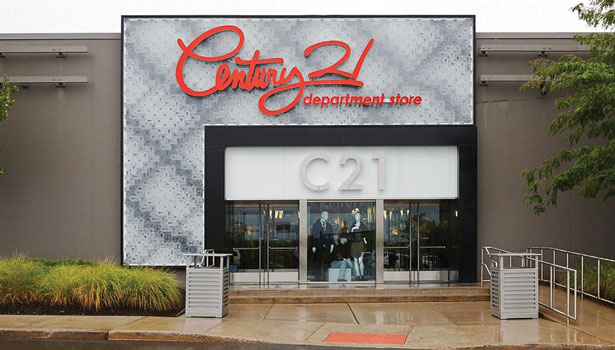Mitigating Retail Shrink with Better Monitoring
It doesn’t matter where you are in the world retail theft is a cost of doing business.

The new Jersey Gardens location of the Century 21 Department Store is utilizing more than 40 IP video surveillance cameras to improve investigations, as well as using analytics to add fraud-detection capabilities at cash registers. Photo courtesy of Tyco Security Products and American Dynamics

The Rolex flagship boutique in the cultural hub of Shaul HaMelech Boulevard, Tel Aviv, Israel, added a variety of megapixel surveillance cameras to protect merchandise, employees and customers, while satisfying the store’s insurance company. Photo courtesy of Avigilon


It doesn’t matter where you are in the world – New Jersey, Tel Aviv – retail theft is a cost of doing business.
More than $13 billion worth of goods are stolen from retailers each year, which amounts to an average of $35 million stolen per day, according to the National Association of Shoplifting Prevention. In additional, habitual shoplifters steal an average of 1.6 times per week, and they report that they are caught an average of only once in every 48 time they steal. How can an investment in surveillance help to mitigate an enterprise’s risk of retail shrink, whether from shoplifting risks, employee error, or premeditated crime?
In early 2014, an armed, masked robber entered the front doors of a Rolex boutique in Tel Aviv, Israel, demanding employees open locked jewelry displays and hand over expensive jewelry and watches. Midway through the robbery, an employee was able to press a panic button, alerting officials at the Euro-Asia head office, who could immediately pull up the video surveillance feed and alert the police. Within minute, police arrived to arrest the robber and his accomplice.
“If the robbery was successful, the costs related would be very heavy,” says Noam Burstein, CEO of Euro-Asia, the owners of the Rolex boutique in Israel. “In addition to the merchandise lost, we would have experienced an increase in insurance premiums and restocking fees. I feel much better not even thinking about it.”
Burstein had seven Avigilon multi-megapixel cameras installed in the new flagship boutique, which enables store employees to observe store activity during off-hours, overlook the store’s lab and inventory, and resolve incidents with indisputable evidence in a fraction of the time it took them with previous systems. The surveillance also enables the Rolex boutique’s managers to improve operational efficiencies and properly evaluate customer service standards.
Security personnel at the boutique manage live and recorded video from a workstation inside the store and a separate workstation inside Euro-Asia’s main offices.
“We wanted to have a system that provided high-resolution images so that we would be able to locate items misplaced by both customers and employees,” Burstein says.
“Our managers now spend more time on their work than on the security system. After the robbery was stopped and the perpetrators were arrested, we managed to give the police the evidence they needed very quickly and were back to work in no time,” he adds.
Across the world, in the Jersey Gardens outlet center in Elizabeth, NJ, the opening of a new Century 21 retail store gave the enterprise’s loss prevention team the chance to test out an IP surveillance system.
Century 21 was averse to delays in camera control that would affect their ability to track and monitor situations in their stores in real time. The camera system they chose, from American Dynamics, moves to position as fast as 512-degrees per second, allowing for active surveillance and efficient tracking of suspicious behavior.
“We have very proactive LP policies in place to protect our inventory and guest experience so we needed the lowest latency and best quality picture from these domes as possible,” says James Betesh, Vice President Loss Prevention, Century 21 Department Stores. Century 21 chose 10 IP pan-tilt-zoom dome cameras, along with an additional 34 HD IP mini-dome cameras. The retailer also employed a new, unified video management system to condense video clips for faster investigations (loss prevention manager Tyrese Williams reported that video that used to take as long as four hours to watch can be condensed to just 25 minutes), and security personnel can access video on an iPad or iPhone, leaving them free to respond to situations while away from their desktop.
Using the system’s analytic capabilities, Betesh says the surveillance can be tied into the POS system and used by fraud analysts to detect issues at the cash registers.
In addition to reducing shrink and providing a safer environment for employees and customers, surveillance systems can also pay off aesthetically and in terms of insurance. According to Burstein, “At first our insurance company demanded that we install cameras and bars in windows in all our shops. However, bars in our windows were out of the question because Rolex would not approve disfigurement of the shop.” By adding the high-definition cameras and security smoke, Euro-Asia was able to compromise with the insurance company and maintain an attractive shopping environment.
Monitoring for Cyber Insider Threats
The retail floor isn’t the only place where employees can cause significant damage to the enterprise. As more and more companies become dependent on their networks, it’s necessary to review how you monitor employees’ actions on the enterprise’s system.
According to a BalaBit IT Security survey of IT security professionals about the use of privileged identity management and privileged activity monitoring (PAM) technology, the top reasons for monitoring privileged users include:
- Detect/track suspicious user behavior and prevent incidents (considered the most important factor for 60 percent of respondents)
- Control and audit IT service providers
- Control and audit internal IT staff
- Support IT/network staff in troubleshooting
- Support internal business processes (i.e. reporting)
- Meet/prove compliance with regulatory requirements
- Control and audit virtual desktop infrastructure (VDI) users
- Reduce costs for IT operations
- Support forensics investigations
- Reduce costs for security audits
Although 98 percent of survey respondents said that a PAM tool could increase the level of protection for their system security, 16 percent say they have no solution deployed at all to protect against malicious insiders. While nearly all of the IT security professionals report using firewalls, only 63 percent of the interviewed say that they use firewall options such as access policies to prevent internal cyber attacks.
Product Showcase - New Surveillance Solutions
Provides Top Image Performance in All Lighting Conditions
6 Series i-PRO camera line from Panasonic
These indoor dome cameras capture and deliver high-definition image quality in a variety of lighting conditions at 60 frames per second, enabling the capture of exceptionally clear images of moving objects. Available in HD 1080p or HD 720p models with the choice of standard or vandal-resistant housings, these cameras also ensure both bright and dark areas are faithfully reproduced with minimum video noise and accurate color reproduction.
Find out more at www.panasonic.com
Designed for Discreet Installation
IQeye Alliance-mini from IQinVision
This compact surveillance camera features both beige and black trim rings for aesthetics and convenience, and it is designed for discreet installation in indoor ceilings, surfaces or wall mounts. The camera also includes increased processing power to run analytics or VMS application on the edge, and it features on-camera storage, WDR, and true day/night capability.
Find out more at www.iqeye.com
Provides Camera Placement Freedom, Smaller Footprint
MPT HeliosTM IR Camera from MicroPower Technologies
Eliminating the need to trench for data or power cables, this solar-powered wireless camera features an infrared illuminator for complete day/night functionality, which flashes five times per second – consuming less than a tenth of the power of an industry-standard IP camera. It also transmits data wirelessly up to a half-mile. The camera’s embedded lithium ion battery powers the camera for up to five days on a single charge.
Find out more at www.micropower.com
Looking for a reprint of this article?
From high-res PDFs to custom plaques, order your copy today!










